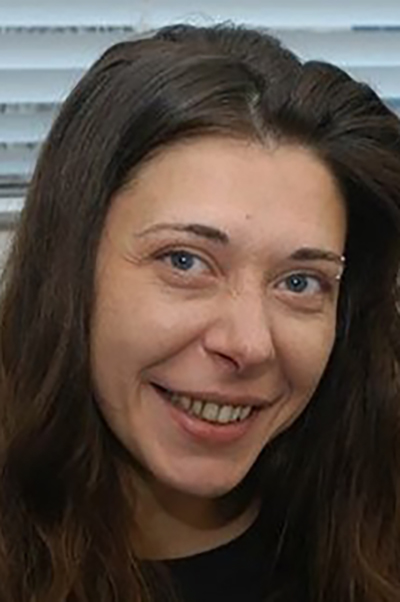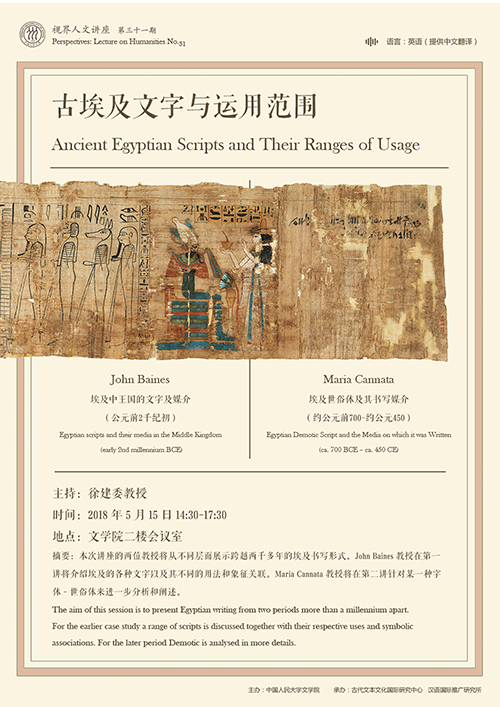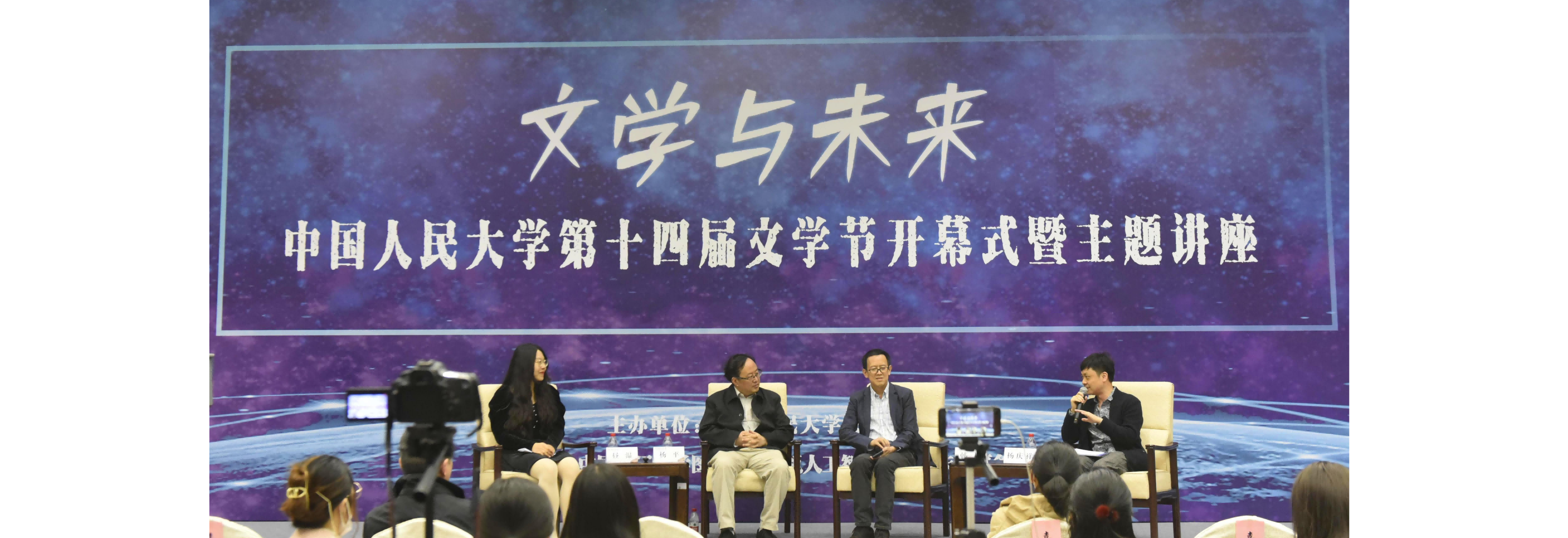【讲座预告】视界人文第31期|古埃及文字与运用范围(Ancient Egyptian Scripts and Their Ranges of Usage)
发布时间:2018-05-08
来源:
视界人文第31期
主题: 古埃及文字与运用范围(Ancient Egyptian Scripts and Their Ranges of Usage)
主讲:
John Baines

主题:埃及中王国的文字及媒介(公元前2千纪初)
Egyptian scripts and their media in the Middle Kingdom (early 2nd millennium bce)
Maria Cannata

主题:埃及世俗体及其书写媒介(约公元前700-约公元450)
Egyptian Demotic Script and the Media on which it was Written (ca. 700 bce – ca. 450 ce)
主持:徐建委副教授
时间:2018年5月15日 14:30-17:30
地点:hga030皇冠手机登录地址二楼会议室
摘要:本次讲座的两位教授将从不同层面展示跨越两千多年的埃及书写形式。John Baines教授在第一讲将介绍埃及的各种文字以及其不同的用法和象征关联。Maria Cannata教授将在第二讲针对某一种字体-世俗体来进一步分析和阐述。
The aim of this session is to present Egyptian writing from two periods more than a millennium apart. For the earlier case study a range of scripts is discussed together with their respective uses and symbolic associations. For the later period Demotic is analysed in more details.
语言:英语(提供中文翻译)
主讲人介绍:
John Baines:牛津大学东方学系埃及学荣休教授。主要研究领域为古埃及艺术史、文学、书写体系和宗教。主要作品:”Presenting and discussing deities in New Kingdom and Third Intermediate period Egypt;” “Scripts, high culture, and administration in Middle Kingdom Egypt;” “Sources of Egyptian temple cosmology: divine image, king, and ritual performer;” High Culture and Experience in Ancient Egypt; The Disappearance of Writing Systems (合编); Visual and Written Culture in Ancient Egypt.
Maria Cannata:牛津大学东方学系埃及学博士,现为北京大学考古与文博学院考古学讲师。主要研究领域为古埃及考古、托勒密时期的埃及、埃及语语法等。代表作品:”Titbits from Tatters: Papyrus Bodleian MS.Egypt.d.19(P);” “The Language of Ramesses: Late Egyptian Grammar;” “Artists and Makers: Funerary Practices in the Roman Period;” Three Hundred Years of Death: The Egyptian Funerary Industry in the Ptolemaic Period (332-30BC) (forthcoming).
英文摘要:
John Baines, ‘Egyptian scripts and their media in the Middle Kingdom (early 2nd millennium bce)’
This paper begins by characterizing briefly writing in the ancient Egyptian First Intermediate period (ca. 2100–1950 bce). It then presents the reforms of writing and usage of different scripts in the 12th dynasty (ca. 1940–1760 bce), including discussion of seals and sealing, as well as practice in hieroglyphs and in semi-cursive forms across a range of contexts and styles. Next, applications of cursive scripts—cursive hieroglyphic and hieratic—are analysed, focusing on a case study of the Ramesseum find of papryi (ca. 1720 bce), as well as the concurrent use of several script forms on coffins, an abundantly attested and rich source. The multiplicity of script forms that were in concurrent operation exemplifies the high cultural value attached to writing, while their inter-convertibility probably acted as a brake on rapid change after the crucial reform of written language and scripts at the beginning of the period.
Maria Cannata, ‘Egyptian Demotic script and the media on which it was written (ca. 700 bce – ca. 450 ce’
This paper begins by outlining the developmental stages of the Egyptian hieratic script that led to the appearance of the Demotic script, as well as the influence of geography and media on the orthography of this new script. It then presents the range of written sources for which Demotic was first used, with its progression from purely applications to use for all types of texts. Next, the concurrent use of different script on the same document is discussed and illustrated with examples from various periods; this multiplicity shows the resilience of the older hieroglyphic and hieratic scripts. Over time, Demotic reached the same status as these other scripts and was use for the same range of textual sources, although it never supplanted them.

主办:hga030皇冠手机登录地址
承办:古代文本文化国际研究中心
汉语国际推广研究所


